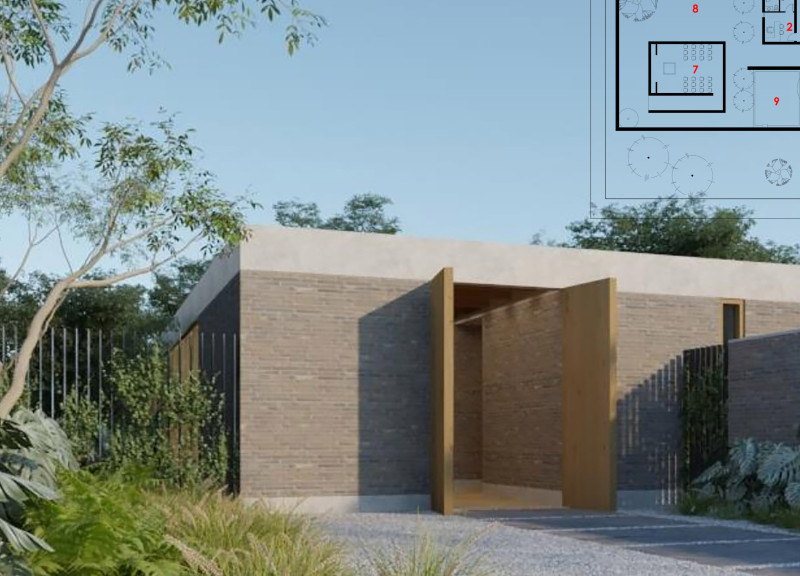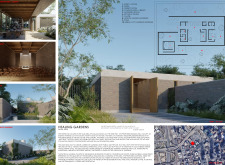5 key facts about this project
Functionally, the Healing Gardens serves multiple purposes. It provides areas for social interaction, personal reflection, and therapeutic activities. Key components include a library and common area that encourage community gatherings, a chapel for spiritual reflection, and dedicated therapy rooms tailored for holistic healing. The incorporation of both interior and exterior gardens allows for interactions with nature that underlie the facility's healing philosophy.
The unique design approach of the Healing Gardens lies in its commitment to biophilic principles, seamlessly blending architecture with natural elements. Materials such as brick, concrete, and wood are used strategically to enhance the sensory experience of the space. The extensive use of large windows facilitates abundant natural light and views of the gardens, which are integral to the design. In addition, water features are thoughtfully included to introduce calming sounds that further promote a peaceful atmosphere.
Another distinguishing factor is the emphasis on community engagement through shared spaces. The communal areas are designed not only for individual reflection but also for fostering connections among visitors. This focus on social interaction differentiates the Healing Gardens from standard hospice designs, as it prioritizes the emotional well-being of its users through collaborative experiences.
Architectural plans and sections further illustrate the layout and functional relationships within the Healing Gardens. The connections between the various spaces contribute to an experience that is both cohesive and diverse. Visitors can navigate through the facility, moving from private reflective areas to communal gathering spaces, all while immersed in a landscape of thoughtfully curated gardens.
For a more comprehensive understanding of the Healing Gardens project, including architectural designs and ideas, we encourage you to explore the architectural plans and sections available for review. These resources will provide deeper insights into this well-considered approach to hospice architecture and its context within the urban landscape of Dallas.























